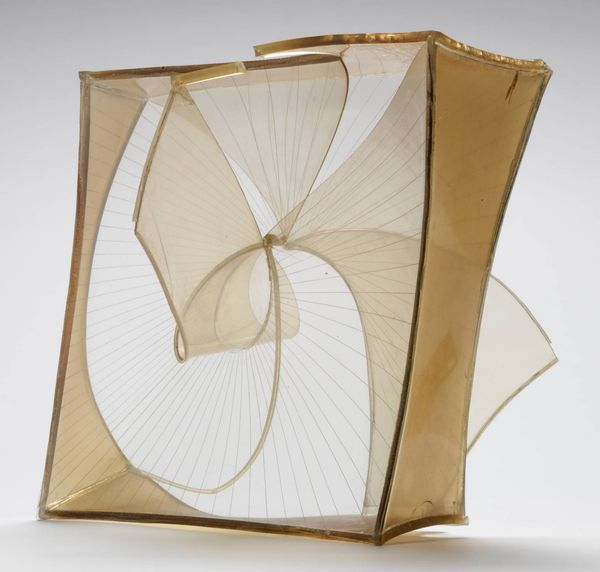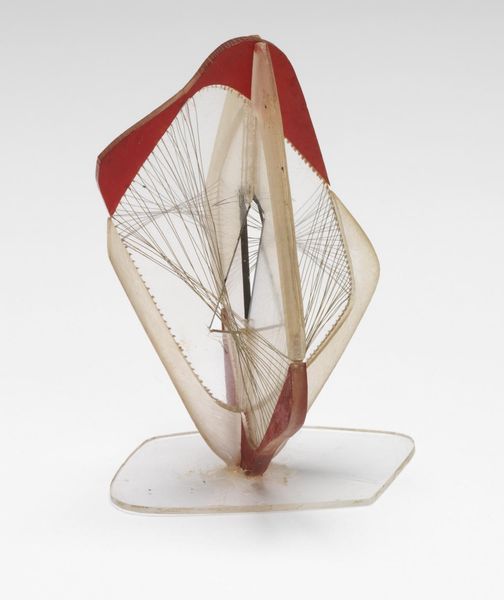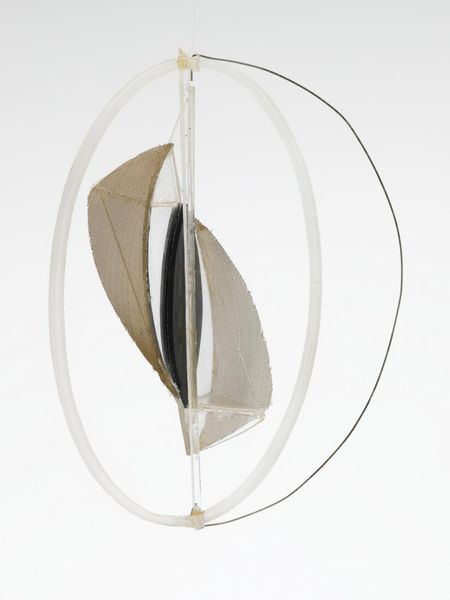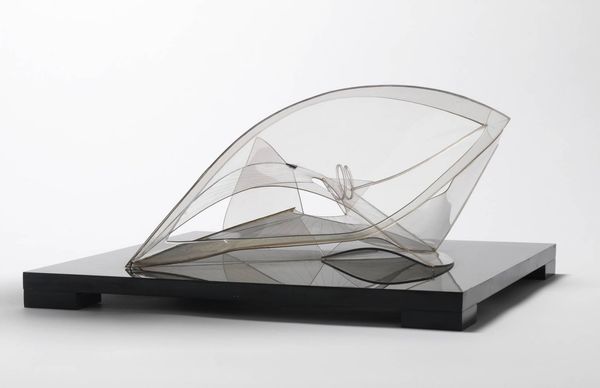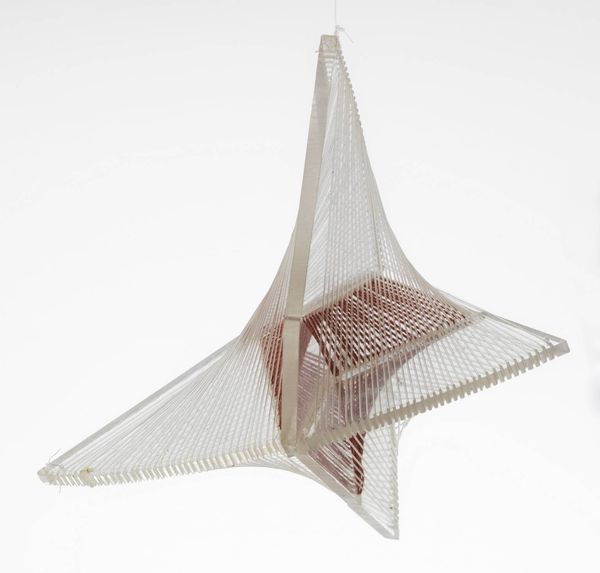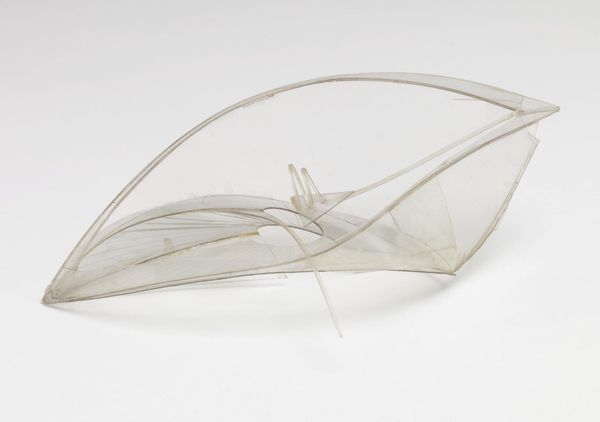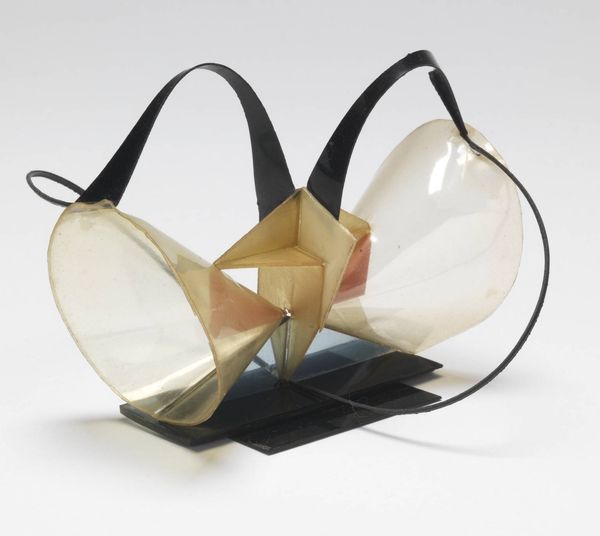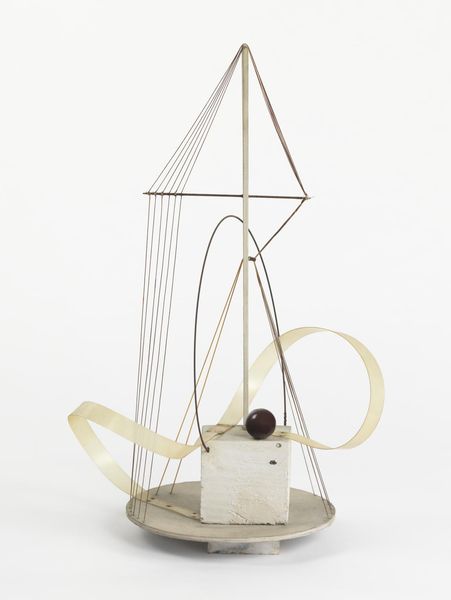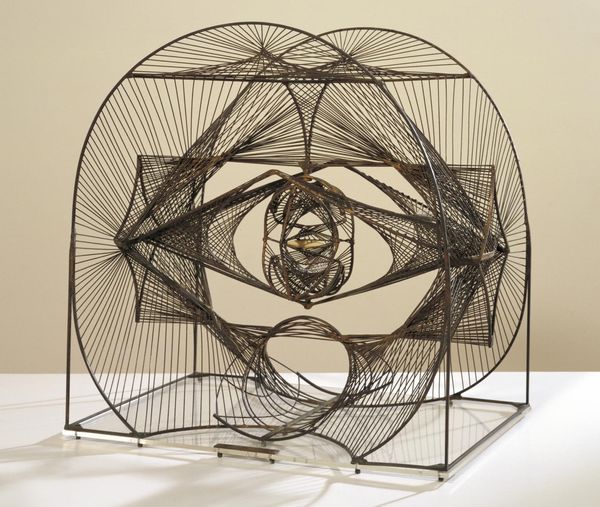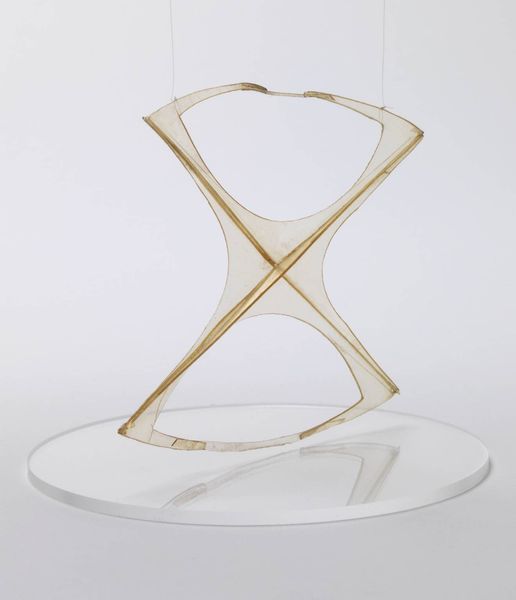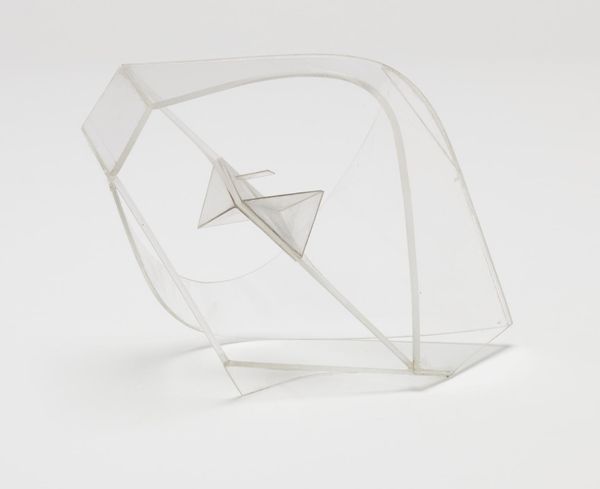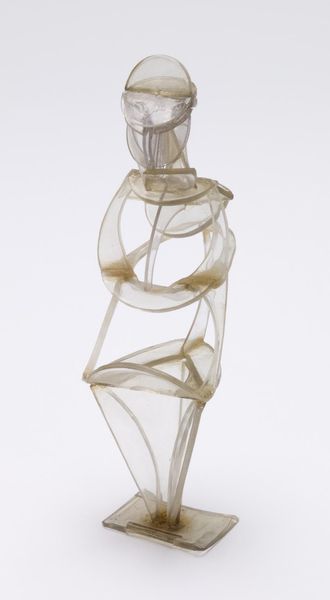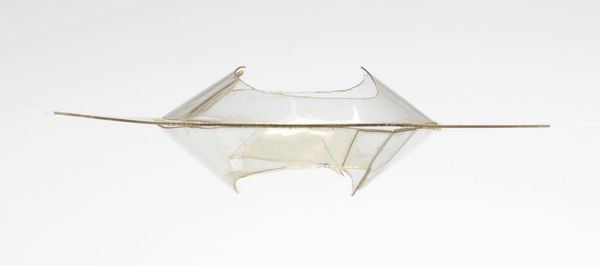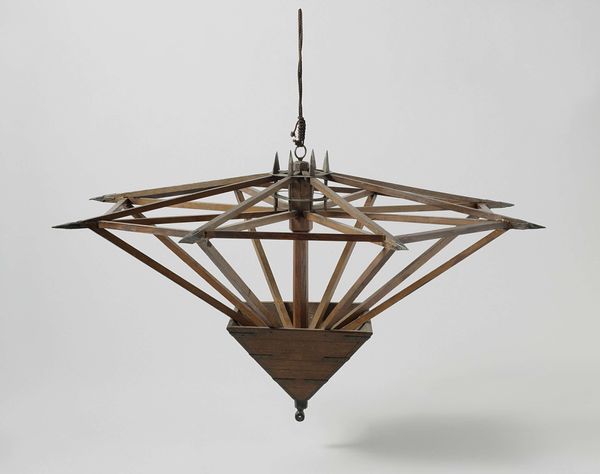
Dimensions: object: 76 x 76 x 38 mm
Copyright: The Work of Naum Gabo © Nina & Graham Williams/Tate, London 2014 | CC-BY-NC-ND 4.0 DEED, Photo: Tate
Curator: Right now, we’re looking at "Model for ‘Construction in Space ‘Crystal’" by Naum Gabo. What do you make of it? Editor: It feels ethereal, almost like a captured thought, hovering in space. The scale is so intimate. Curator: Gabo was interested in disrupting the idea of sculpture as mass. He used industrial materials like plastic to explore transparency, making the invisible visible. Editor: It's fascinating how a humble material like plastic can evoke such a sense of lightness, challenging notions of value in art. The delicate filaments make it feel like it could float away. Curator: Exactly. He wanted to represent the dynamism of space, not the static solidity of objects. It's like a little poem about the future, made from the stuff of the present. Editor: It really gets you thinking about how we shape our world, one material at a time.
Comments
tate 7 months ago
⋮
http://www.tate.org.uk/art/artworks/gabo-model-for-construction-in-space-crystal-t02179
Join the conversation
Join millions of artists and users on Artera today and experience the ultimate creative platform.
tate 7 months ago
⋮
Many of Gabo's sculptures first appeared as tiny models. They were often projects for monumental public schemes, rarely achieved, in which sculpture and architecture came together. His proposal that Monument for an Airport could be used to advertise Imperial Airways, as either a desk display or an outdoor sculpture, was never realised. Model for 'Torsion', however, was eventually translated into a large fountain outside St Thomas' Hospital in London. Gabo's increasing concern, from the late 1930s, with the aesthetic aspect of his work at the expense of the industrial can be seen in Model for 'Construction in Space "Crystal"'. Gallery label, August 2004
